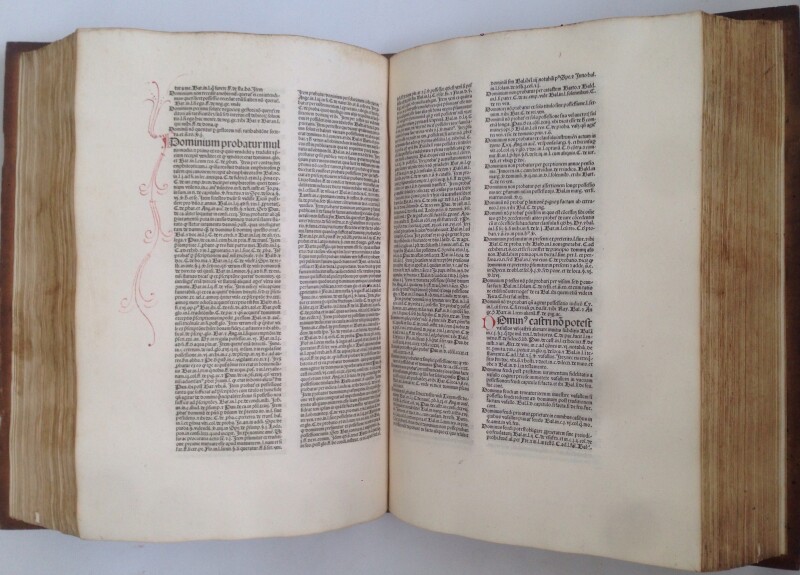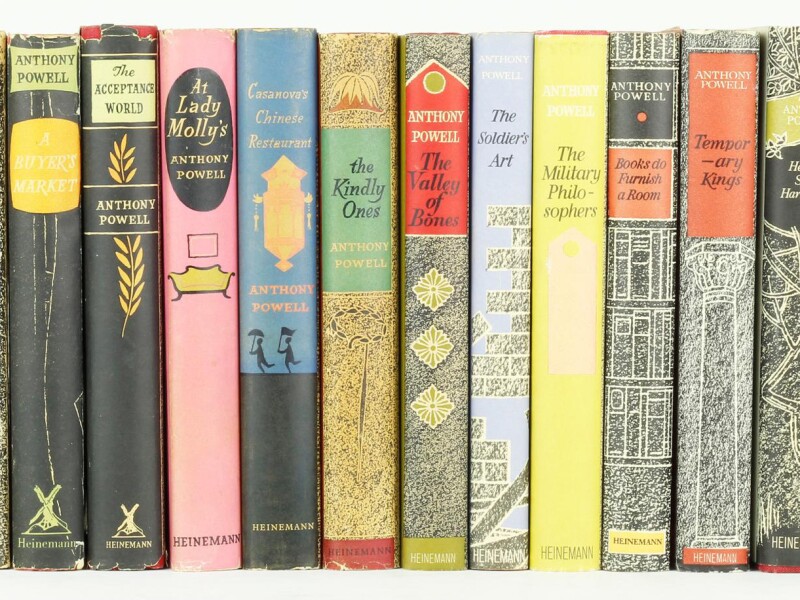
Incunabula (also incunable or incunabulum) refers to a book, pamphlet or other document that was printed – and not handwritten – before the start of the 16th century. Johannes Gutenberg changed the world when he invented the printing press and created the first printed book, the Gutenberg Bible, in the 1450s, so incunabula are printed materials produced between circa 1455 and 1500.
Gutenberg launched a new era of mass communication after books had been produced by hand for centuries. The printed books created in Europe during these five decades are historically and culturally important. Naturally, incunabula are among the most desirable of all rare books.
The first recorded usage of the term incunabula came in 1639 when the noted bibliophile Bernhard von Mallinckrodt issued a pamphlet to mark the bicentenary of the advent of printing by movable type titled De ortu et progressu artis typographicae (“Of the rise and progress of the typographic art”). He used the phrase prima typographicae incunabula, “the first infancy of printing” to describe books printed before the date 1500. The date was chosen arbitrarily, probably because it was a nice round number but it stuck. The word itself is an anglicized form of incunabulum, which means swaddling clothes or cradle in Latin.
During this period, there were actually two types of printing. The block method using a single carved or sculpted wooden block for each page, and Gutenberg’s more advanced method of typographic printing using moveable type.

Incunabula were printed in hundreds of cities across Europe, including Paris, Venice, Rome, Strasbourg, London, and Mainz. Latin was the most common language for these early printed books. Printers often recreated works already in book form such as the bible and other religious texts.
After Gutenberg’s Bible, a second famous example of incunabula is the Nuremberg Chronicle - an illustrated encyclopedia of world history written by Hartmann Schedel and printed in 1493. There were editions in Latin and German, and it became an early bestseller. The book was printed by Anton Koberger, an early pioneer of bookselling and publishing. Other early printing pioneers included William Caxton in London, Peter Schöffer in Mainz, Johann Heynlin in Paris, and Dirk Martens in Flanders.
Today, the best place to see surviving incunabula are museums and institutional libraries. The British Library, the Vatican, the Bodleian, and the Bavarian State Library all hold substantial collections. It is not known how many incunabula editions were printed, but Gutenberg’s printing technology was adopted at speed and hundreds of thousands of books were probably created.
Key dates for incunabula
1455 - The Gutenberg Bible becomes the first book printed in Europe with movable metal type.
1461 - Der Ackermann aus Böhmen printed by Albrecht Pfister, becomes the first printed book in German, and also the first book with woodcut illustrations.
1470 - Il Canzoniere by Francesco Petrarca becomes the first book printed in Italian.
1472 - Sinodal de Aguilafuente becomes the first book printed in Spain and in Spanish.
Circa 1475 - Recuyell of the Historyes of Troye becomes the first book printed in English. William Caxton translated the book from French, recuyell means collection.
1476 - La légende dorée printed by Guillaume LeRoy becomes the first book printed in French.
1476 - Aristotle's De Animalibus becomes the first printed compilation of works on biology.
1477 - The first printed edition of Geographia by Ptolemy becomes the first printed book with engraved illustrations.
1482 - The first printed version of Elements by Euclid is published, becoming the basis for mathematical teaching for centuries.
Examples of incunabula





